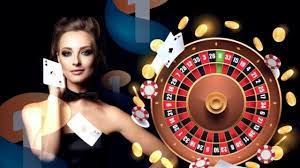The Joker card is a fascinating and enigmatic element found in various card games and cultural references. With its origins rooted in the deck of playing cards, the Joker has evolved into a symbol of unpredictability, chaos, and often, jokercard.ca balance. This article explores the history, significance, and cultural impact of the Joker card.
History and Origin
The Joker card is believed to have been introduced in the United States during the mid-19th century, primarily in the game of Euchre. It was created as a trump card, representing a wild card that could take on the value of any other card in play. The Joker’s design often features whimsical illustrations, typically depicting a clown or jester, symbolizing its role as a card of surprise and flexibility.
As card games spread globally, the Joker found its place in various games, adapting to different cultural contexts. In many games, it serves not only as a wild card but also as a unique element that can alter the flow of the game dramatically.
The Joker in Card Games
In traditional card decks, the Joker is often included as an extra card, making a standard deck consist of 52 cards along with two Jokers. Its use varies widely among different games:
- Euchre: In this game, the Joker acts as the highest trump card, capable of winning any trick.
- Poker: Some variations of poker use the Joker as a wild card, allowing players to complete straights or flushes.
- Rummy: In Rummy, Jokers can be used as substitutes for any card, making them valuable for forming sets or runs.
The Joker’s versatility in gameplay adds an element of surprise and strategy, making it a cherished card among players.
Cultural Significance
Beyond the realm of games, the Joker card has transcended into popular culture and literature, often symbolizing chaos, unpredictability, and rebellion. Here are a few notable cultural references:
- Literature and Film: The Joker has been portrayed as a complex character in various forms of media. Notably, the Joker from DC Comics, especially as depicted by Heath Ledger in “The Dark Knight,” represents anarchy and the darker sides of human nature. This portrayal has made the character an icon, blending the traits of a traditional Joker with deeper psychological elements.
- Symbol of Rebellion: The Joker card is often associated with subversion and counterculture. Its unpredictable nature reflects the idea of breaking societal norms and embracing chaos, appealing to those who identify with its rebellious spirit.
- Art and Performance: The Joker has also influenced artists and performers, symbolizing the duality of humor and tragedy. This duality is captured in various forms, from circus acts to street performances, where the Joker embodies both joy and sorrow.
Conclusion
The Joker card is more than just a playing card; it is a symbol rich with history and cultural significance. From its origins in card games to its representation of chaos in popular culture, the Joker continues to intrigue and inspire. Its ability to adapt and evolve reflects the complexities of human nature, making it a timeless figure in both games and society. Whether as a wild card in a game or a character in a story, the Joker serves as a reminder of life’s unpredictability and the beauty found within chaos.


